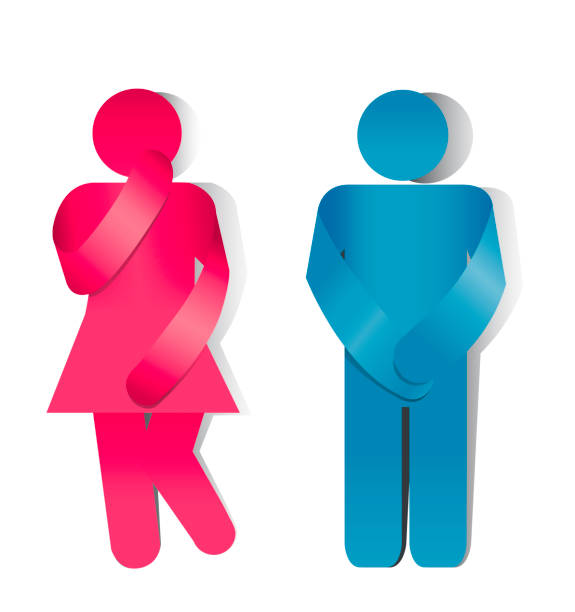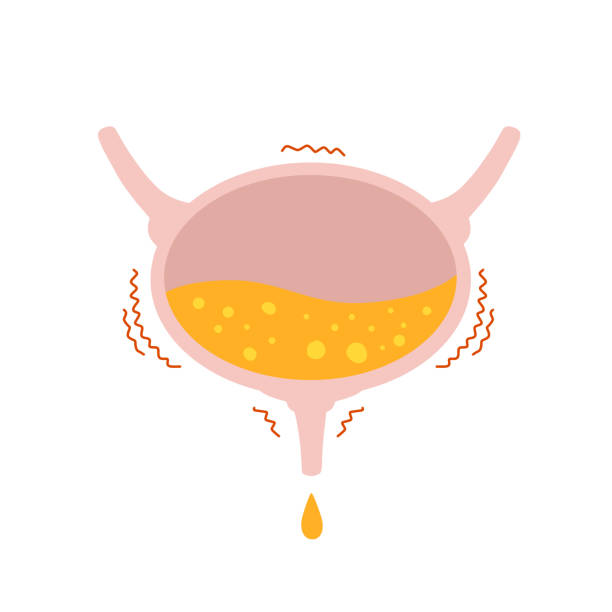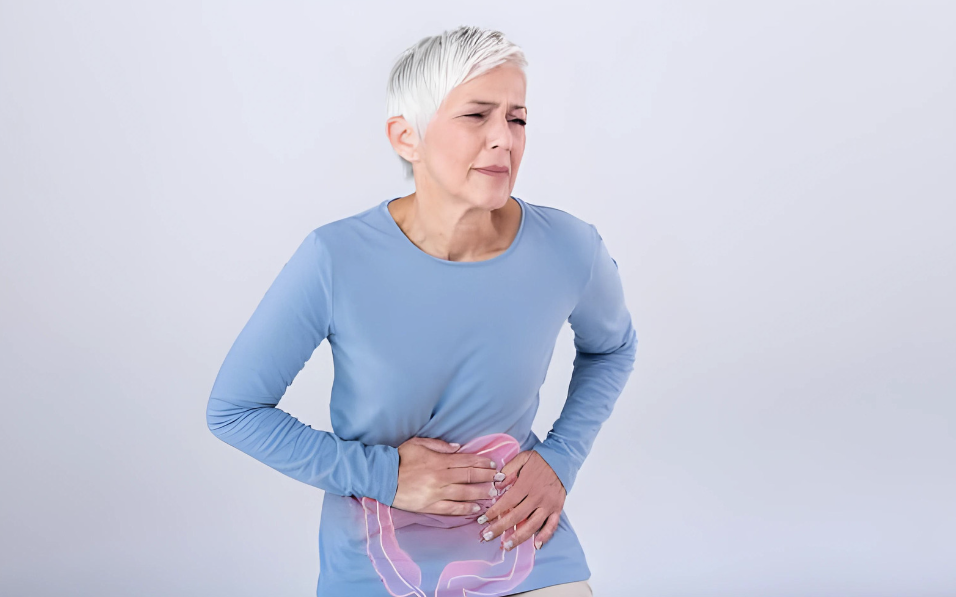Health Conditions
Constipation and Its Unexpected Impact on Urinary Incontinence
The complicated interplay of many biological systems frequently generates unanticipated linkages, with symptoms of one ailment influencing those of another. Constipation and urinary incontinence are two prevalent but separate health conditions, each with its own set of challenges and repercussions. However, a lesser-known but important concern arises: Can constipation, which is defined by irregular bowel movements and difficulties passing stool, contribute to or worsen urinary incontinence?
Exploring this potential association reveals light on the complicated dynamics of these two illnesses, as well as insights into the underlying mechanisms, risk factors, and management techniques. This article digs into the intriguing relationship between constipation and urine incontinence, offering helpful insights for those navigating the complexities of gastrointestinal and urinary health and looking for effective symptom management and preventative techniques.

Understanding Urinary Incontinence
Urinary incontinence is the involuntary spilling of urine. It is a widespread issue that affects millions of individuals globally. Although it can happen at any age, it is more common in older people, especially women.
Types of Urinary Incontinence
Urinary incontinence is classified into several kinds, the most prevalent of which are:
- Stress incontinence occurs when the bladder’s pressure increases due to coughing, sneezing, laughing, or exercising. It is more prevalent in women than in men.
- Urge incontinence occurs when a person feels a sudden and overwhelming urge to urinate, which is followed by an involuntary loss of urine. It is also referred to as hyperactive bladder and is more prevalent in elderly persons.
- Overflow incontinence occurs when the bladder fails to empty entirely, causing it to overflow and leak urine. It is more frequent in men than in women and is typically caused by an enlarged prostate.
- Functional incontinence occurs when a person is unable to use the restroom on time owing to physical or mental limitations, such as dementia, arthritis, or mobility issues.
- Mixed incontinence refers to a combination of stress and urge incontinence.
Common Causes and Risk Factors
Several factors can lead to the development of urine incontinence, including:
- Age: As people age, the muscles and tissues that support the bladder deteriorate, increasing their risk of incontinence.
- Menopause: The decrease in estrogen levels during menopause can cause abnormalities in the urinary system, raising the risk of incontinence.
- An enlarged prostate can exert pressure on the bladder and urethra, resulting in urine incontinence.
- Pregnancy and childbirth can weaken or injure pelvic muscles and tissues, resulting in urine incontinence.
- Obesity: Excess weight can put pressure on the bladder, increasing the risk of incontinence.
- Chronic cough: A prolonged cough can put a strain on the bladder and cause urine incontinence.
- Chronic constipation can put a strain on the bladder, causing urine incontinence.
To summarize, urine incontinence is a prevalent condition that can significantly affect a person’s quality of life. Understanding the many types, causes, and risk factors for urinary incontinence can help people manage or prevent it.

The Link Between Constipation and Urinary Incontinence
Impact of Constipation on Bladder Control
Constipation has a considerable impact on bladder control and is one of the primary causes of urinary incontinence. When someone is constipated, they frequently strain to pass feces, which puts pressure on the bladder and weakens the sphincter muscles that regulate urine flow.
The pressure from the rectum can also compress the bladder, creating a sense of urgency and an increased need to urinate. This can cause urine incontinence, particularly in people who already have compromised pelvic floor muscles.
Pelvic Floor Muscles and Rectal Pressure
The pelvic floor muscles are vital for bladder control and bowel motions. When these muscles weaken, it can cause urinary incontinence and constipation. Straining during bowel motions might injure these muscles, causing bladder control issues.
Furthermore, constipation can create rectal pressure, weakening the pelvic floor muscles and resulting in urine incontinence. Healthy pelvic floor muscles are vital for preventing constipation and urine incontinence.
To summarize, constipation can induce urine incontinence by exerting pressure on the bladder, weakening the sphincter muscles, and injuring the pelvic floor muscles. Maintaining healthy bowel habits and pelvic floor muscles is essential for avoiding both constipation and urine incontinence.

Diagnosis and Treatment Options
Medical Evaluation
If a person is suffering symptoms of constipation and urine incontinence, they should see a doctor for a medical assessment. The doctor will do a physical examination and may request tests to discover the origin of the symptoms. These tests may include a urine analysis, blood testing, and imaging examinations.
Managing Incontinence with Lifestyle Changes
Constipation-related urinary incontinence can often be managed with lifestyle adjustments. These adjustments may include increasing fiber intake, consuming more water, and exercising more frequently. Pelvic floor exercises, such as Kegels, can also assist in strengthening the muscles responsible for urinating.
Surgical and Medicinal Interventions
If lifestyle changes do not work, a doctor may suggest surgical or pharmaceutical procedures. Medications to calm the bladder or strengthen the pelvic floor muscles may be administered. In some circumstances, surgery may be required to treat an underlying problem, such as a prolapsed bladder or rectum.
It is crucial to remember that the treatment choices for constipation-related urine incontinence can differ based on the underlying cause of the symptoms. A doctor can advise on the best treatment option for each specific instance.

Prevention and Management
Dietary and Lifestyle Modifications
The prevention of constipation-induced urinary incontinence entails lifestyle and dietary adjustments. Consuming a nutritious diet high in fiber, fruits, and vegetables can help prevent constipation. Drinking enough water and other fluids can also help soften and pass stools.
It’s also vital to avoid foods that can aggravate constipation. These include processed foods, fried foods, dairy products, and sugary or high-fat foods. Limiting coffee and alcohol consumption might also help prevent constipation.
Regular Exercise and Weight Management
Constipation and urinary incontinence can also be avoided with regular exercise and healthy weight management. Exercise helps to induce bowel motions and maintain regularity. It also strengthens the pelvic floor muscles, which are necessary for bladder function.
Maintaining a healthy weight helps to prevent constipation and urinary incontinence. Obesity can put pressure on the bladder and exacerbate symptoms of urine incontinence.
In addition to food and lifestyle adjustments, it is critical to have good bowel movements. This involves making time to use the restroom when necessary, avoiding straining during bowel motions, and developing a regular bowel schedule.
Strengthening the pelvic floor muscles with exercises like Kegels can also help prevent and control urine incontinence. These exercises involve contracting and relaxing the muscles that support the bladder, and they can be performed quietly throughout the day.
Overall, preventing and treating constipation-induced urine incontinence entails lifestyle and nutritional modifications, developing healthy bowel habits, and strengthening the pelvic floor muscles. Individuals who follow these steps can improve bladder function and lower their risk of urine incontinence.
Conclusion
To summarize, while constipation and urinary incontinence may appear unconnected, their complicated interplay emphasizes the significance of holistic health care. While constipation does not directly cause urine incontinence, prolonged straining during bowel movements, as well as increased abdominal pressure, might exacerbate existing incontinence symptoms or lead to transitory leakage.
Understanding this potential link enables people to handle both gastrointestinal and urinary issues holistically, using preventive strategies including eating a high-fiber diet, staying hydrated, and incorporating pelvic floor exercises into their daily routine. Individuals can improve their quality of life by treating the underlying causes of constipation and urine incontinence through effective management measures. Furthermore, consulting with healthcare specialists can provide specialized assistance and guidance in negotiating the intricacies of these frequent yet significant health concerns.
Trusted Health, Wellness, and Medical advice for your well-being


